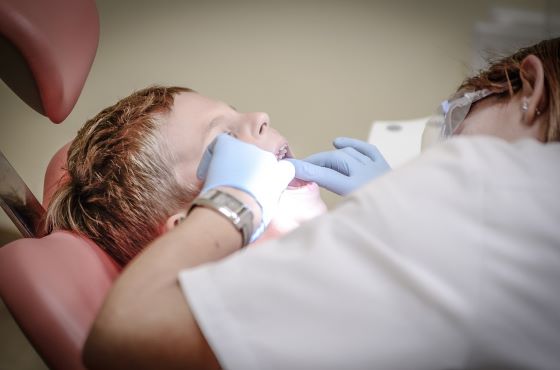Enter your email to receive the CareQuest newsletter:
February 22, 2022
Oral Health in America: Advances and Challenges, a follow-up to the Surgeon General’s Report on Oral Health in America in 2000, was released in January. The nearly 800-page report, which includes writing and research from more than 400 contributors, explores the nation’s oral health during the past two decades.
Why is the report significant? What might it mean for the oral health industry?
Michael Monopoli, DMD, MPH, MS, FICD, the vice president for grant strategy at CareQuest Institute, shares his reactions below. Dr. Monopoli leads the Institute’s philanthropic grantmaking activities, leveraging his expertise to collaborate with grantees and partners to strengthen communities and promote health equity. He is a past President of the American Association of Public Health Dentistry, a Fellow of the American College of Dentists, and was inducted into the International College of Dentists in 2021.
Can you give us a snapshot of the report? What’s in it?
This report is an extensive review of the status of oral health in America, the effectiveness of the current delivery system, and most importantly, forms a basis for strategies for improvement. It is the work of hundreds of authors and reviewers with community input.
It’s hard to boil down a 790-page report, but what do you see as the main takeaways?
I would call attention to the three calls to action, which summarize the takeaways nicely. They are:
- To significantly improve the nation’s oral health, policy changes are needed to reduce or eliminate social, economic, and other systemic inequities that affect oral health behaviors and access to care.
- To improve oral health for more people, dental and other health care professionals must work together to provide integrated oral, medical, and behavioral health care in schools, community health centers, nursing homes, and medical care settings, as well as dental clinics.
- To strengthen the oral health workforce, we need to diversify the composition of the nation’s oral health professionals, address the costs of educating and training the next generation, and ensure a strong research enterprise dedicated to improving oral health.
What policy changes do you think are probable or likely given what’s in the report?
The report provides compelling evidence of the need and effectiveness of interprofessional care, so continued support and work toward interoperability of electronic records and referral systems seems likely. The report also provides evidence of cost barriers to care, so hopefully policy around strengthening existing public dental benefits and creating new ones will occur. It’s likely that the focus and actions around addressing inequities will be strengthened by this report.
 Do you think the report would have been different if the social spending bill that included adding dental benefits to Medicare had passed last year?
Do you think the report would have been different if the social spending bill that included adding dental benefits to Medicare had passed last year?
I am sure there would have been a specific section on Medicare if it had, but these reports are years in the making. The report was in its final form a year before the opportunity for a Medicare benefit was there.
Did anything in the report surprise you?
It’s focus on future opportunities for innovation was strong and it waded into some of the controversial issues like workforce changes. The focus on technology and future possibilities is a hopeful sign that we can move forward and rethink the way we manage oral disease and support equitable access and outcomes. It’s always a good sign when there is courage to productively discuss controversial topics, but we still have a way to go.
What was CareQuest Institute’s role in the report?
Many of our team members, grantees, and partners contributed to the report and we advocated strongly with then Surgeon General Adams to sponsor the report.
Several CareQuest Institute grantees are noted in the report.
Yes, for example, the National Interprofessional Initiative on Oral Health (NIIOH) and its Smiles for Life curriculum was recognized in several places throughout the report. And the North Carolina Oral Health Collaborative (NCOHC), a program of the Foundation for Health Leadership and Innovation to increase access and equity in oral health care for North Carolina's most vulnerable populations, was called out. In 2021, NCOHC and its key stakeholders drafted and introduced legislation in the North Carolina General Assembly to codify teledentistry in the state's Dental Practice Act.
How might this report shape CareQuest Institute’s priorities and work in the coming years?
Since we advocated strongly to advance the report, we were gratified that it was very much aligned with our priorities. It will help us to advocate for our priorities and I hope we can use it as a baseline to show the progress of our work.
Why does a report like this come so infrequently?
It started as a Surgeon General Report. Surgeons general generally have focus areas and it takes a great deal of advocacy to get a Surgeon General to make the significant investment in a subject area that it takes for one of these reports. Our advocacy was strengthened by being able to say it has been 20 years, that it was a perfect time to reassess.
Editor’s Note: View the full report, related fact sheets, and videos on the National Institute of Dental and Craniofacial Research website.